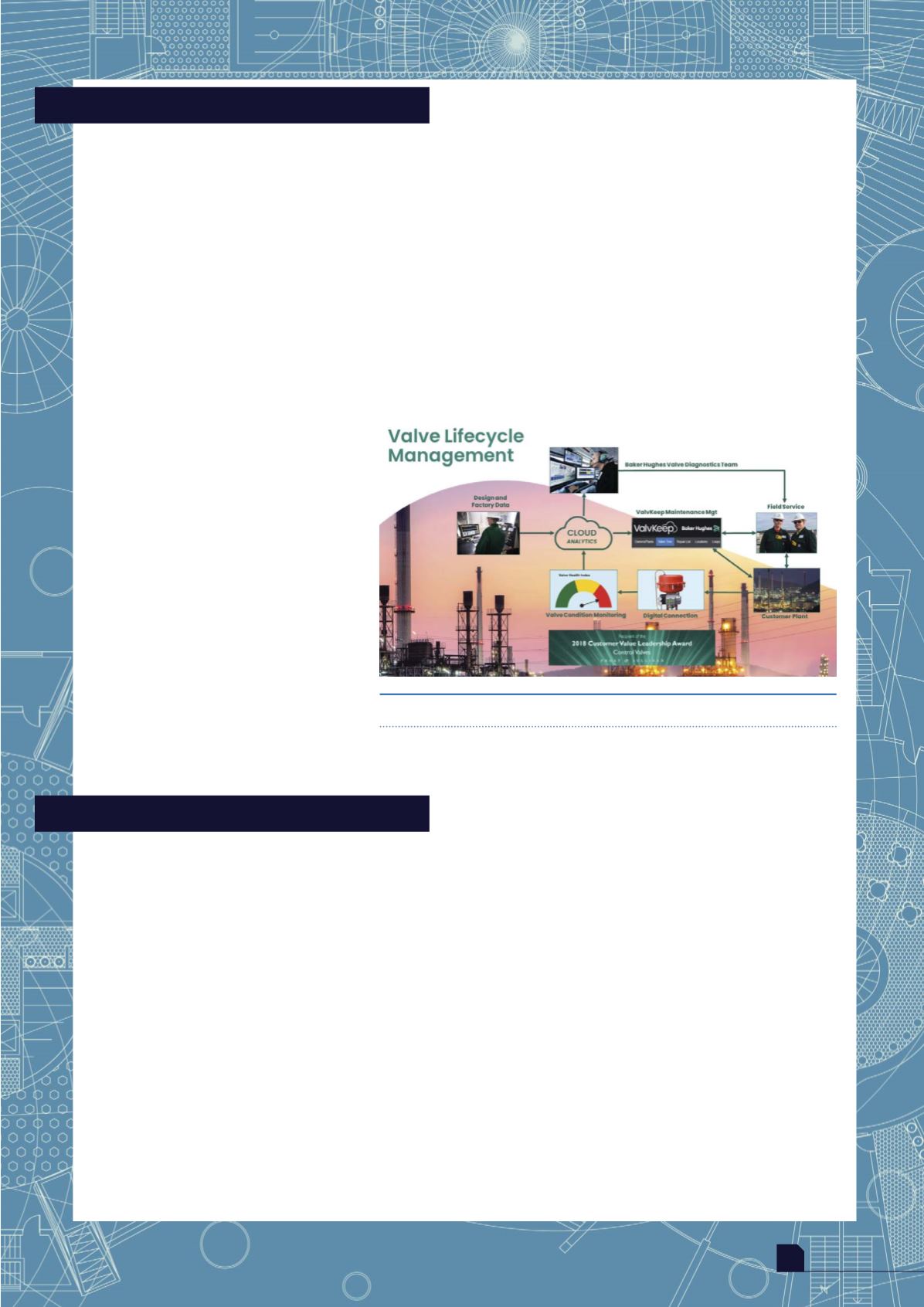
July
2020
HYDROCARBON
ENGINEERING
67
Conval
Founded in 1967, Conval designs and manufactures
high-performance, 0.5 in. through 4 in., stock and custom
Clampseal and Camseal severe service valves at its
Advanced Manufacturing Center in Enfield, Connecticut,
US. These valves, featuring in-line serviceability and
excellent total life cycle value, are installed at hydrocarbon
processing facilities around the world.
For example, an oil recovery plant in Canada was
experiencing frequent plugging of its choke valves installed
on the steam separator blowdown line due to the presence
of precipitates in the line. Over time, the valve’s internals
became increasingly worn, lowering the quality of steam
reaching the injection well pad, which negatively affected
production.
In some cases, the existing valves needed to be
replaced every 2 – 8 weeks. Every time a valve needed to
be replaced, it first had to be cut out of the line. This
time-consuming and costly work could only be performed
during a plant shutdown.
Based on previous experience, an operation shift
supervisor recommended Conval to the plant reliability
engineer as a possible solution. The Clampseal throttling
valve was recommended due to its modular design, which
allows for valve components to be easily removed and for
the valve to be serviced as needed without cutting it out of
line. In-line serviceability would provide the plant with
significant cost savings by reducing downtime, labour and
maintenance expense.
At first, Clampseal throttling valves were installed on a
trial basis. The facility’s engineering personnel noted that the
valves did not plug as often as the valves they replaced. This
would prevent the facility from having to cut out plugged
valves in the future. After this successful trial, the plant
installed 20 Clampseal throttling valves on various boiler
blowdown lines on three steam generators. These throttling
valves only need to be inspected and serviced every two years
as part of the plant’s routine preventive maintenance
programme. This saves the plant a considerable amount of lost
production time, service time and money; amounting to an
estimated US$700 000 to US$800 000/yr in savings.
Baker Hughes
Baker Hughes has announced the launch of the latest
evolution in digital valve positioners, the Masoneilan SVI3.
Built upon a robust legacy platform, with billions of
in-field installed operating hours, the SVI3 continues to
leverage excellence of a proven design in both reliability
and performance. This next generation platform takes a
leap forward with advanced technology including
on-device diagnostics, expanded data storage for
on-device trend collection, and design modularity
allowing performance upgrades through simple-to-add,
snap-on modules.
The SVI platform, and the Masoneilan Valve Lifecycle
Management (VLM) software, continue to be designed on
open and neutral platforms that enable full integration
with any valve original equipment
manufacturer (OEM), digital positioner OEM,
or distributed control system (DCS). This
allows operations to be monitored, as well as
the detection of wear on the valve. Failures
can also be predicted using software such as
Masoneilan Valve Aware. The new SVI3 now
includes 19 new diagnostics for advanced and
continuous monitoring of valve health while
in operation, in addition to an increased
storage capacity with over one year of
memory to track performance trends on the
device. These industry firsts provide users
with the ability to unlock historic diagnostic
analysis to monitor events over time and set
preventative alerts; even in cases where
valves are not under an immediate and
continuous monitoring contract.
Users have specified the SVI platform for decades
because of its ease of use. With a single button
‘Smart Cal’, the device can be self-commissioned and
tuned while the user walks away to manage other needs.
Improved user interface and an easy to read screen helps
users unlock information without complexity. Improved
features such as 40% reduction in steady state air
consumption improves emissions output, and a 15%
improvement in air delivery enables faster actuation.
Certified for ambient conditions as low as -55°C in arctic
conditions, the SVI design is robust enough to operate in
the most challenging environments. This technology
allows plants to progress into the era of digital
transformation, to unlock the advanced potential of the
device that may not have been initially purchased by an
EPC or third party previously.
Valve lifecycle management.








